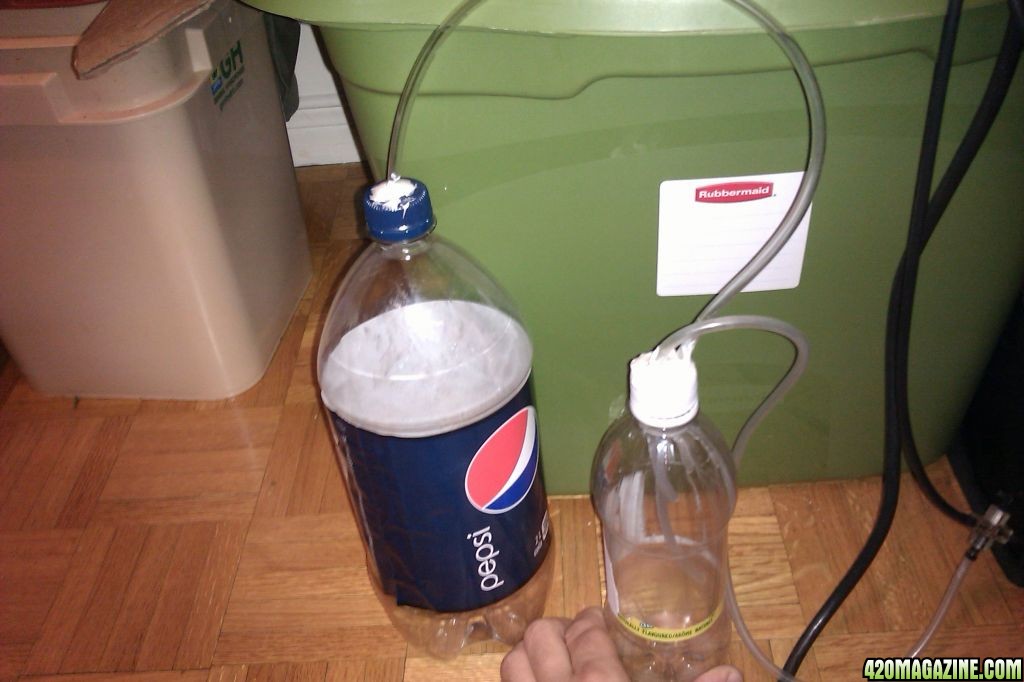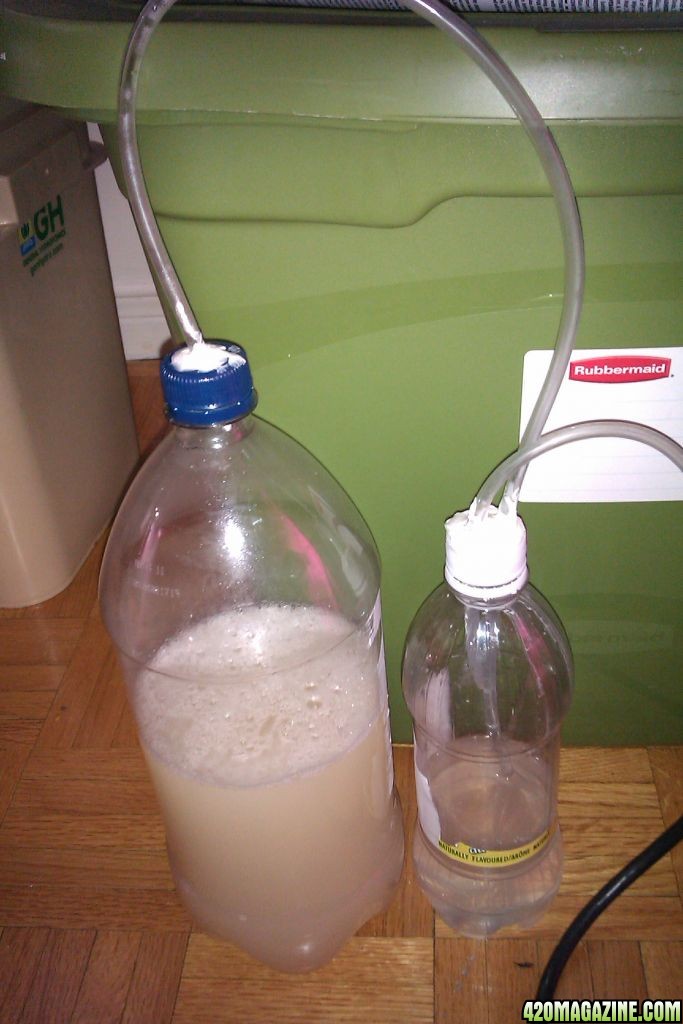How to make a CO2 generator for your greenhouse/grow room plants
If you have a greenhouse or grow room and have wanted to put in a CO2 system but couldn't afford the expense or had difficulty with how technical one can be to set up and run, have I got the solution for you! Well it is easy for anyone to set up and use this simple CO2 generator for healthy and vibrant plants. As you know plants take in CO2 during the day and expel Oxygen, at night they do the reverse but to a lesser degree. In order for your plants to thrive they need CO2. You could leave the door open for fresh air, but in the winter your plants could freeze and opening the doors invites all sorts of plant eating pests. Making a simple generator to use solves those problems.
Things You'll Need:
empty gallon water bottle or well washed milk jug.
1 Cup Sugar
1 heaping teaspoon of Activated Yeast.
craft iron
airline tubing or other such tubing to direct CO2 to your plants
twist ties to attach tubing to uprights
coat hanger, garden stakes or some other thing to act as a holder for your CO2 curtain
pocket knife or punch to make holes into tubing.
1 "T" connector for your tubing.
Step 1plug in craft iron, when it is hot enough you will use it to burn a hole into the lid of your gallon water bottle. The hole must be just large enough to force the tubing into it. Force end of tubing into the lid from the outside to the inside entering the jug about 1/4 inch.
Step 2Fill water jug 1/3 with lukewarm water then using a funnel add 1 cup of sugar. Shake well to dissolve as much sugar as possible.
Step 3Using 1 cup measure fill about 1/3 full with lukewarm water. Add dry activated yeast and stir till dissolved. Using funnel add this to your water jug then fill to just over 1/2 way with more lukewarm but not hot water. Hot water will kill your yeast.
Step 4place lid onto container which is now your generator. Place generator in your greenhouse or grow room as close to your plants as possible.
Step 5take your coat hanger pieces or wooden stakes and stake 4 around the perimeter of your plants, you can put stakes in planters with the plants. These will be the uprights your airline tubing will attach to.
Step 6Cut enough airline tubing to go completely around your plants and attach both ends of the tubing to the "T". Using plant tape or twist ties you will attach this tubing to the uprights you just made. Use the piece of airline attached to your water bottle lid to attach to the final end of your "T"
Step 7using your pocket knife or tubing punch you will poke some holes into the tubing surrounding your plants on the sides of the tubing that is directly facing the plants.
If you have a greenhouse or grow room and have wanted to put in a CO2 system but couldn't afford the expense or had difficulty with how technical one can be to set up and run, have I got the solution for you! Well it is easy for anyone to set up and use this simple CO2 generator for healthy and vibrant plants. As you know plants take in CO2 during the day and expel Oxygen, at night they do the reverse but to a lesser degree. In order for your plants to thrive they need CO2. You could leave the door open for fresh air, but in the winter your plants could freeze and opening the doors invites all sorts of plant eating pests. Making a simple generator to use solves those problems.
Things You'll Need:
empty gallon water bottle or well washed milk jug.
1 Cup Sugar
1 heaping teaspoon of Activated Yeast.
craft iron
airline tubing or other such tubing to direct CO2 to your plants
twist ties to attach tubing to uprights
coat hanger, garden stakes or some other thing to act as a holder for your CO2 curtain
pocket knife or punch to make holes into tubing.
1 "T" connector for your tubing.
Step 1plug in craft iron, when it is hot enough you will use it to burn a hole into the lid of your gallon water bottle. The hole must be just large enough to force the tubing into it. Force end of tubing into the lid from the outside to the inside entering the jug about 1/4 inch.
Step 2Fill water jug 1/3 with lukewarm water then using a funnel add 1 cup of sugar. Shake well to dissolve as much sugar as possible.
Step 3Using 1 cup measure fill about 1/3 full with lukewarm water. Add dry activated yeast and stir till dissolved. Using funnel add this to your water jug then fill to just over 1/2 way with more lukewarm but not hot water. Hot water will kill your yeast.
Step 4place lid onto container which is now your generator. Place generator in your greenhouse or grow room as close to your plants as possible.
Step 5take your coat hanger pieces or wooden stakes and stake 4 around the perimeter of your plants, you can put stakes in planters with the plants. These will be the uprights your airline tubing will attach to.
Step 6Cut enough airline tubing to go completely around your plants and attach both ends of the tubing to the "T". Using plant tape or twist ties you will attach this tubing to the uprights you just made. Use the piece of airline attached to your water bottle lid to attach to the final end of your "T"
Step 7using your pocket knife or tubing punch you will poke some holes into the tubing surrounding your plants on the sides of the tubing that is directly facing the plants.









